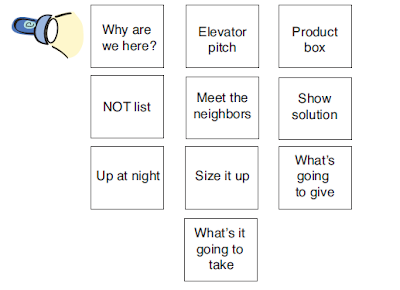Hello everyone,
Sorry about the lack of posts lately. I got a lot of things came at the same time. I had to write my final paper to finish the Post Grad course I'm doing, planning a trip to the Brazilian state where I was born - approximate 2000 kilometers - to defend this paper. And on top of that, I went to the hospital for a urgency procedure. Yes, I have a lot of things to write about and I hope I can get most of it done by tomorrow. So lets start.
We started the first sprint with some issues like: we have a PO - product owner the most important person in a Agile project - that wasn't so present when the project began, we hadn't set up a test and staging environment to the project and we weren't trained enough in the brand new set of ALM - application life cycle management - tools bought by the company and expected to be used in this project. That's how we attacked each one of those issues.
For the first issue we assumed that we were good to set the project priorities to the sprint. We select three stories that we thought that may brought good value to our project, notified the PO and started to develop. In the mean time, our analysts were studying the next stories we think that are good candidates to the next sprint. The only problem with that was that we chose stories that didn't bring any changes to the interface and were mostly related with back-end functionality and weren't the kind of story that make people say "Wow! That's really cool!". It wasn't big deal and we made it anyway, but this is one of the lessons we learned: choose at least one "Wow!" thing to delivery in the first sprint.
 |
| PO - Product Owner |
For the second issue, we chose a shortcut that didn't turns out well. We use the development environment to do every single task from development to test to deploy. This happened because two main problems. First, it is very difficult to get a test environment set up. I really don't know why this happen so frequently in the companies I worked but it is really common. And second, we thought that we are all be present during the sprint all the time and that weren't any chance that we miss someone during its execution mainly the our senior developer that was taking care of the environment. But, as you can anticipate, was exactly what happened. Our senior developer got conjunctivitis, a highly contagious viral infection, and also got a 5 days sick note. It was chaos. The other two developers didn't know how to put everything working and we had problems to finish some activities. Second lesson: don't use a developer machine as the only environment available to the project - although this can be difficulty for us - and, most important, train at least another team member in application delivery, or you can end up in trouble if this important member gets sick or leaves the team.
 |
| Always have a backup plan |
For the third issue, we just made as much mistakes as possible with the ALM tool. I was responsible for create all tasks for a virtual sprint board (and the physical board too) and because my lack of experience doing it we got what I called a "Sprint roller coaster Burndown". It was just so funny to see the graphic ups and downs that was really difficult to see any progress on the sprint whatsoever. At least the physical sprint board get all activities done at the end of the week. Lesson learned: if you are getting used to a new tool and you are sure that you will make mistakes on it, is nice communicate with the stakeholders that this can happen (we did that, and didn't get any trouble with the high management).
 |
| Our Sprint Burndown |
To finish the sprint, we had the Showcase. The Showcase is a meeting where the team shows what was develop during the sprint. The PO evaluates the software delivered and approves it or not. To do that we had support from a consultant that is helping the company to get the Brazilian software maturity process similar to CMMI. She was a really experienced professional that conducted the ceremony that got to its end with no big issues. Of course we get several warnings regarding the project environment - what turned out good for us, because that made our project manager see the necessity to get it quickly. But I think that for the first experience, we did really well. And remember what I said about the lack of PO for our project? That got visible during the Showcase that he couldn't wear the hat of PO and one of our analyst got promoted to the new PO for the project. I think that was a great decision for the project and now we have someone more present to get the project to the path to success.
Sorry for the long post. I hope you enjoy it.
Best regards,
Gustavo Fonseca



